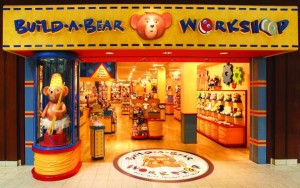Consumers have changed. They’re mobile, connected and volatile. They’re upending the traditional model. Retailers must adapt and organize themselves so as to offer consumers the most compelling shopping experience. The following is a round up of the major trends set to prevail in the coming years, written by our partners at Cegid.
Omnichannel is here to stay
Sales channel convergence was already well underway in 2013 and continues to gain ground as consumer expectations increase. A consumer can already find an article online, buy it with her smartphone and pick it up or exchange it in the store (click & collect). Tomorrow, with store check-in, she will be able to pick up the contents of a basket prepared online. But for the retailer, this is no easy task. A recent Accenture study showed that while nearly half of all companies had a dedicated omnichannel team, only 6% had not encountered any obstacle in the execution of their projects.
The integrated supply chain
The same Accenture study showed that nearly 3/4 of consumers found it essential to know whether a product was available in-store before deciding to buy it, whereas only 32% of retailers currently offered this visibility. This mismatch underscores the difficulties retailers encounter in integrating their back-office technology with all of their distribution channels. What a shame, when integrating logistical functions across the entire supply chain could not only offer customers the transparency they want but also enable retailers to dramatically reduce their logistics costs.
The mobile wallet
According to market research firm Forrester, m-commerce payments will total $90 billion by 2017. To make sure they are on board, retailers have begun to adopt solutions such as PayPal, Google Wallet, Square Wallet and Dwolla. In the background behind these solutions is a dedicated mobile application or web-based back office that enables retailers to manage their marketing and loyalty campaigns in real time. A marketing opportunity to better target both customers and prospects!
Relentless, aggressive marketing is a thing of the past. Customization is now the name of the game. Each customer is offered a personalized experience. E-commerce learned this lesson a long time ago; it’s now the stores’ turn. Retailers can now use new technologies (Bluetooth, geolocalisation, LED, audible signal), to send personalized messages and contextualized promotions to their in-store customers, on their smartphones, based on the department or aisle they are in. Similarly, brands have understood how important it is to build a relationship of trust between them and the consumer and are now hiring salespeople dedicated exclusively to consulting and advisory roles. Certain store chains, such as the US company Build-A-Bear, have even made personalisation into a business model.
Loyalty is being rewarded
A 2013 study by the consulting firm Maritz showed that consumers sign up for an average of 7.4 loyalty programs each, but that every year 53% of them cancel one or more programs. So retailers are revisiting their loyalty programs and replacing them with personalized reward programs based both on their purchases and the information they share on social networks. And to consolidate their brand image and firmly position the brand’s values, some retailers even go so far as to take consumers’ personal behavior into account in their loyalty programs. For example, the Walgreens drugstore chain encourages its customers to stay fit with a program that rewards not only purchases in Walgreens stores but also vaccinations, recommendations and physical exercise.
The transformation of point of sale
Certain retailers, to keep drawing customers into the store, are turning it into an attractive and interactive space. Most of these have equipped their sales teams with smartphones and tablets, but the most audacious have reinvented the customer experience entirely and offer a total immersion in the brand’s environment. Gucci stores, for example, have installed five columns of high-resolution, interactive screens to let consumers feel the pulse of the fashion-show runway. At the same time, pop-up stores are appearing on every corner. The rise of cloud-based applications and mobile-store systems encourages retailers to launch pop-up boutiques. Adidas, for example, took advantage of the re-release of its Stan Smith model to launch a digital pop-up store in central London. In another vein, Kate Spade has teamed up with e-Bay to put a new spin on window shopping, with touch screens on the windows enabling New Yorkers to buy items on display via PayPal and have them delivered within the hour!


